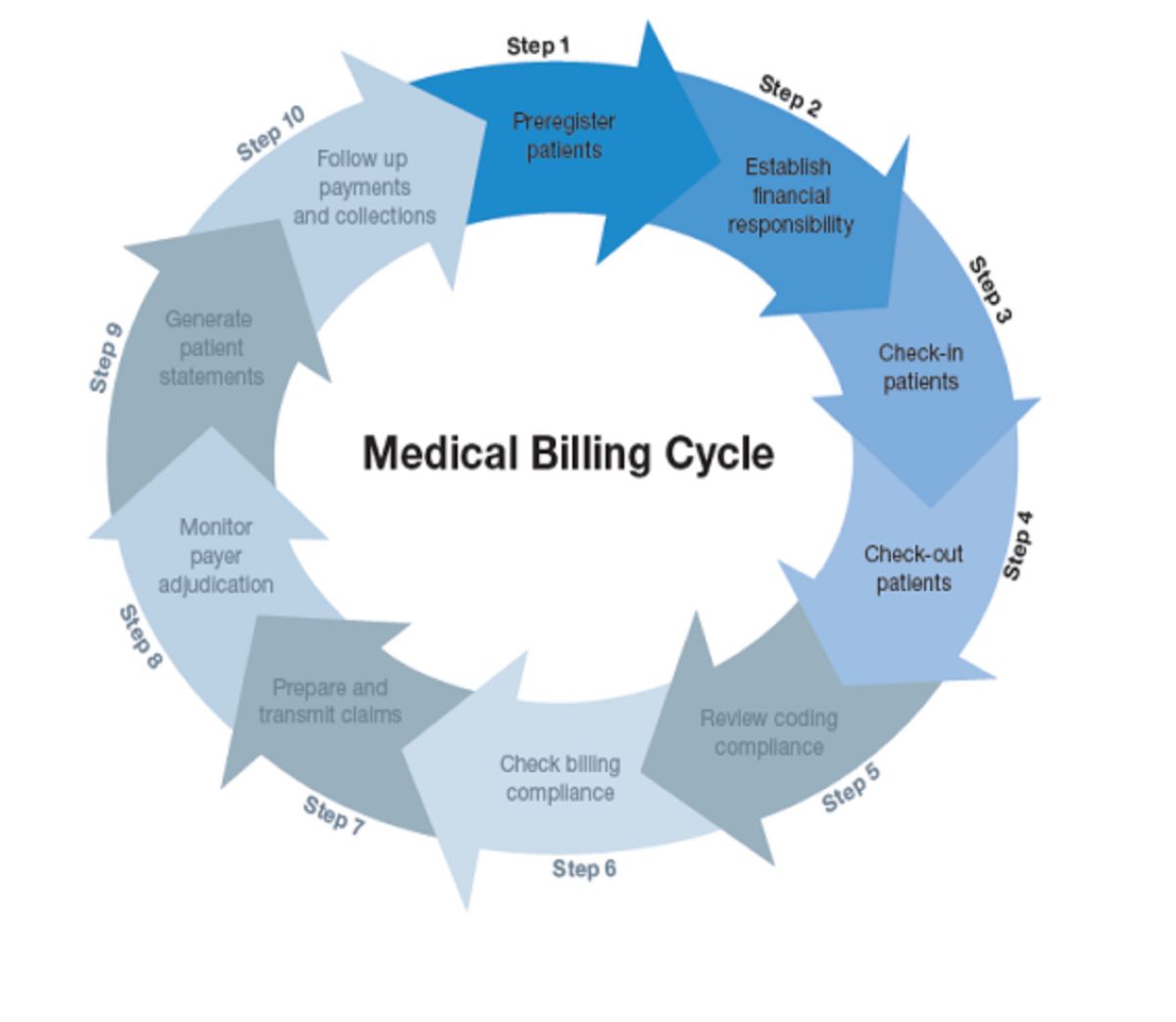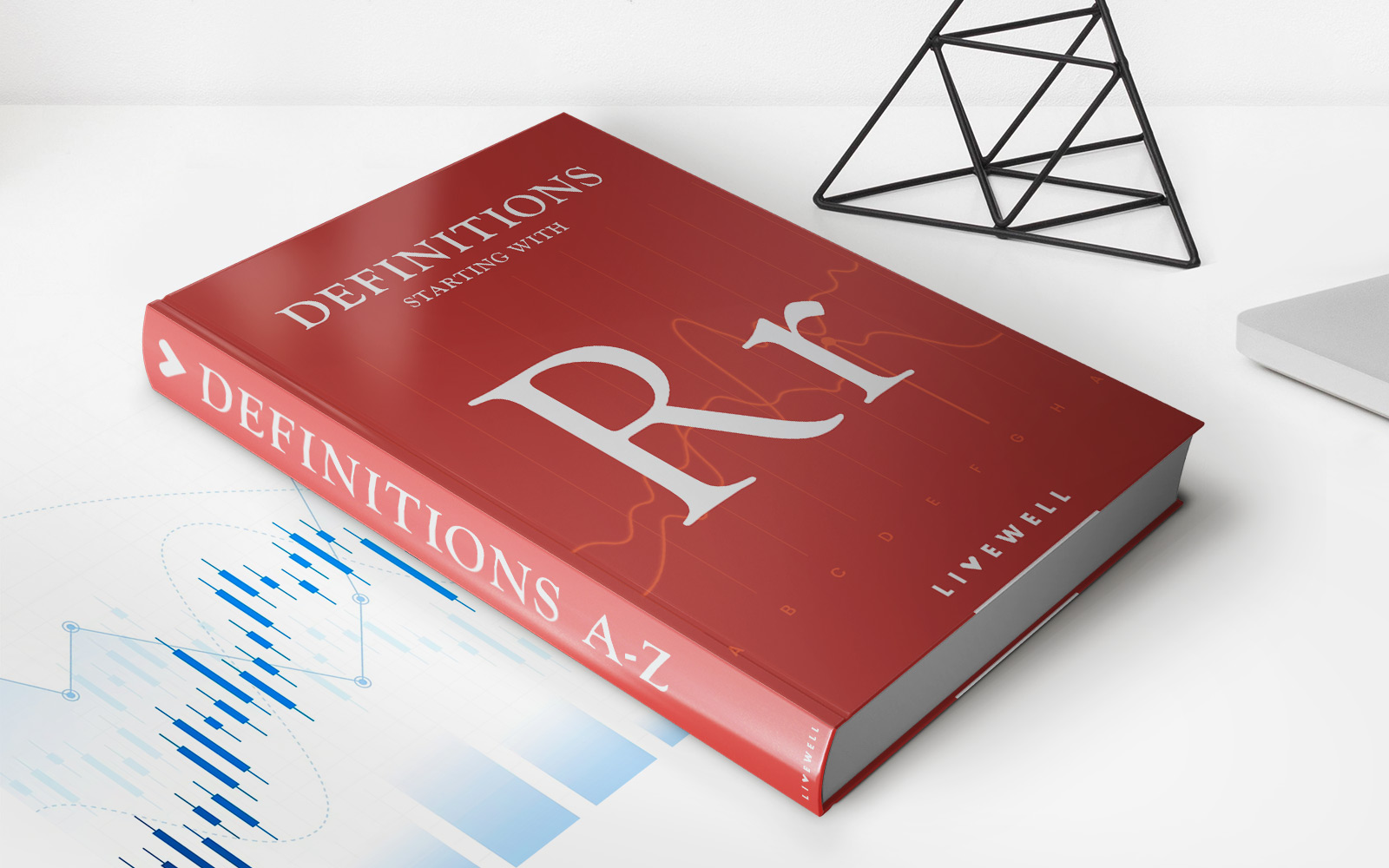

Finance
Why Does Capital Structure Matter?
Published: December 24, 2023
Discover the importance of capital structure in finance and how it influences business decisions, profitability, and risk management. Learn why understanding capital structure matters for financial success.
(Many of the links in this article redirect to a specific reviewed product. Your purchase of these products through affiliate links helps to generate commission for LiveWell, at no extra cost. Learn more)
Table of Contents
Introduction
Capital structure plays a crucial role in the financial management of a company, referring to the way a firm finances its operations using a combination of debt and equity. It represents the mix of long-term and short-term sources of funds used by a company to support its activities and investments.
Understanding and managing capital structure is essential for businesses as it directly impacts their financial health and ability to generate profits. The decisions made regarding capital structure affect a company’s risk profile, cost of capital, and overall value.
In this article, we will delve into the importance of capital structure, the factors that influence it, the impact on firm value, and the role of debt and equity in crafting an optimal capital structure. We will also explore some case studies to provide practical insights into the real-world implications of different capital structures.
By gaining a deeper understanding of capital structure and its significance, businesses can make informed decisions to optimize their financial structure, improve profitability, and maximize shareholder value.
Definition of Capital Structure
Capital structure refers to the way a company finances its operations and investments through a combination of equity and debt. It represents the proportion and mix of various sources of funds utilized by a firm to meet its financial requirements.
Equity, also known as shareholders’ funds, includes the capital contributed by the owners of the business and retained earnings. It represents the ownership stake in the company and provides a cushion for absorbing losses. Equity holders have voting rights and are entitled to a share in the company’s profits through dividends.
Debt, on the other hand, refers to borrowed funds that a company raises from creditors such as banks, financial institutions, or bondholders. The borrowed capital is repaid over a specified period, usually with interest.
The combination of equity and debt in a company’s capital structure determines the proportion of ownership control and financial risk. A capital structure can be highly leveraged, with a larger proportion of debt, or relatively conservative, with a higher proportion of equity.
The capital structure decision is influenced by various factors, including the nature of the business, industry dynamics, cash flow stability, growth prospects, and regulatory considerations. It is essential for companies to strike a balance between debt and equity to optimize their capital structure and achieve their financial objectives.
Importance of Capital Structure
The capital structure of a company plays a vital role in its financial management and has several important implications. Here are some key reasons why capital structure is important:
- Cost of Capital: Capital structure decisions impact a company’s cost of capital, which refers to the overall rate of return required by investors. By finding the right balance between debt and equity, a company can minimize its cost of capital and enhance its profitability. Debt typically has a lower cost than equity due to tax advantages and fixed interest rates.
- Risk Management: Capital structure affects a company’s risk profile. Higher levels of debt increase financial risk as it creates obligations for the company to meet interest and principal payments. On the other hand, relying more on equity reduces financial risk but may dilute shareholder control. Finding an optimal capital structure helps strike a balance between risk and return.
- Flexibility: The capital structure of a company influences its flexibility in financial decision-making. A well-structured capital mix provides flexibility in raising funds for growth, acquisitions, or new projects. It allows companies to adapt to changing market conditions and capitalize on opportunities.
- Debt Capacity: A well-managed capital structure enables a company to determine its debt capacity. A firm with a strong financial position and cash flow can take on more debt to finance investments and expansion. Conversely, excessive debt can strain a company’s ability to repay and impede its growth prospects.
- Investor Perception: Capital structure also influences investor perception and confidence. A balanced capital structure signals financial stability and responsible financial management, attracting potential investors and stakeholders. The right mix of debt and equity enhances a company’s credibility and may lead to improved access to capital markets.
It is important for companies to regularly assess and optimize their capital structure to align with their financial goals, risk appetite, and industry dynamics. By striking a balance between debt and equity, companies can improve profitability, enhance shareholder value, and ensure long-term sustainability.
Factors Affecting Capital Structure
Several factors influence the capital structure decisions of a company. Understanding these factors is crucial for businesses to make informed decisions that align with their financial goals and risk appetite. Here are some key factors that impact capital structure:
- Business Risk: The level of risk associated with a company’s operations plays a significant role in determining the capital structure. Companies with stable cash flows and low business risk may opt for higher leverage to benefit from the tax advantages of debt. Conversely, companies operating in volatile industries or facing uncertain market conditions may prefer a conservative capital structure with more equity.
- Tax Considerations: Tax laws and regulations can influence the capital structure decisions of a company. Debt financing often provides tax benefits as interest payments are tax-deductible. This may incentivize companies to utilize debt to reduce their tax liabilities. However, changes in tax regulations can impact the attractiveness of debt financing, and companies need to consider the long-term implications.
- Industry Norms: The capital structure preferences of companies within an industry can be influenced by industry norms. If a particular industry has a historical trend of using higher levels of debt, companies within that industry may follow suit. Industry benchmarks and peer analysis provide valuable insights into the prevailing capital structure practices and can guide decision-making.
- Access to Capital: The availability and cost of different sources of capital impact capital structure decisions. Companies with easy access to debt financing at favorable interest rates may opt for higher leverage. Likewise, companies with strong relationships with equity investors may rely more on equity capital. The capital market conditions and the company’s creditworthiness are important considerations in determining the optimal capital structure.
- Growth Opportunities: The growth prospects of a company and its investment opportunities influence the capital structure. Companies with attractive growth opportunities may choose to finance their expansion through debt to leverage their returns. Conversely, companies with limited growth prospects may prefer a more conservative capital structure with less debt to minimize financial risk.
- Management Philosophy: The personal preferences and risk appetite of the company’s management team can impact capital structure decisions. Some managers may have a conservative approach and prefer to rely more on equity financing for stability, while others may be more comfortable with taking on higher levels of debt to optimize capital structure and enhance returns.
It is essential for companies to carefully evaluate these factors and strike a balance between debt and equity financing that aligns with their unique circumstances and objectives. Regular monitoring and adjustment of the capital structure may be required to adapt to changing market dynamics and optimize financial performance.
Impact of Capital Structure on Firm Value
The capital structure decisions of a company can significantly impact its overall value. The way a firm chooses to finance its operations through the combination of debt and equity has several implications for its financial health and market valuation. Here are some key ways in which capital structure can affect firm value:
- Cost of Capital: The capital structure directly influences a company’s cost of capital, which is the minimum return required by investors. By finding the right balance between debt and equity, a company can minimize its cost of capital and improve its profitability. Efficiently managing the cost of capital increases the value of the company as it attracts more investors and reduces the financing burden.
- Tax Benefits: Debt financing provides tax benefits as interest payments are tax-deductible. This reduces the company’s tax burden and enhances its after-tax profitability. By utilizing debt financing efficiently, a company can increase its cash flow, which in turn can contribute to higher firm value.
- Financial Risk: Capital structure decisions impact a company’s financial risk profile. With higher levels of debt, a company’s financial risk increases as it becomes more exposed to interest rate risk and the potential inability to meet debt obligations. On the other hand, a conservative capital structure with more equity reduces financial risk but may dilute shareholder control. Striking an optimal balance between debt and equity helps balance risk and return, which can affect the perceived value of the company.
- Flexibility: The capital structure affects a company’s flexibility to undertake future investments, acquisitions, or strategic initiatives. A well-structured capital mix provides the flexibility to raise funds at favorable terms, enabling companies to pursue growth opportunities that enhance firm value. A high level of financial flexibility can be viewed positively by investors, potentially leading to a higher market valuation.
- Perception by Investors: The capital structure decisions of a company can influence the perception of investors and analysts. A balanced and well-managed capital structure signals financial stability and efficient capital management. This can enhance investor confidence and lead to a higher valuation multiple for the company’s shares.
It is important for companies to carefully consider the impact of their capital structure decisions on firm value. Striking the right balance between debt and equity financing, based on the company’s financial goals, risk tolerance, and industry dynamics, can contribute to increased profitability, stability, and long-term shareholder value.
Role of Debt and Equity in Capital Structure
Debt and equity are two fundamental components of a company’s capital structure. Understanding the roles they play can help businesses make informed decisions regarding their financing mix. Here is an overview of the roles of debt and equity:
Debt: Debt represents borrowed funds that a company raises from external sources such as banks, financial institutions, or bondholders. Debt financing involves the issuance of bonds, loans, or other debt instruments with a fixed repayment schedule and interest payments. The role of debt in a capital structure includes:
- Leverage: Debt allows a company to amplify its returns by leveraging its equity capital. By taking on debt, a company can finance its operations and investments while using a smaller proportion of its own funds. This can enhance profitability and return on equity for shareholders.
- Tax Shield: Interest payments on debt are generally tax-deductible, providing a tax advantage for companies. This tax shield reduces the company’s tax liability, increasing after-tax profits and cash flow. This advantage is particularly significant for companies operating in higher tax jurisdictions.
- Fixed Obligations: Debt carries an obligation to make regular interest and principal payments. This fixed payment schedule provides a level of certainty in financial planning and allows companies to better manage their cash flow. However, falling behind on debt payments can lead to default and potential legal consequences.
- Financial Risk: Taking on excessive debt increases the company’s financial risk. The higher the debt-to-equity ratio, the greater the financial risk as the company must meet interest and principal payments, even during periods of financial distress.
Equity: Equity represents the ownership stake in a company held by its shareholders. It includes the initial investment made by owners and any additional contributions, as well as retained earnings. The role of equity in a capital structure includes:
- Ownership Control: Equity represents ownership in the company, entitling shareholders to voting rights and the ability to participate in major decisions. By holding equity, shareholders have a say in the company’s strategic direction.
- Residual Claim: Equity holders have a residual claim on the company’s assets and earnings. In the event of liquidation, equity holders are entitled to a share of the remaining assets after all debt obligations have been satisfied.
- Long-Term Stability: Equity financing provides long-term stability to a company’s capital structure. Unlike debt, equity has no fixed repayment obligations, allowing the company greater flexibility in managing its cash flow. This stability can be particularly valuable during economic downturns or periods of financial uncertainty.
- Dividends and Capital Gains: Equity investors can potentially benefit from dividends distributed by the company. Dividends represent a share of the company’s profits and provide a return on investment. Additionally, equity investors can realize capital gains by selling their shares at a higher price than their initial purchase price.
Understanding the roles of debt and equity in a capital structure is essential for businesses to strike a balance that maximizes their financial objectives, risk tolerance, and growth aspirations. The optimal mix between debt and equity may vary based on industry dynamics, company size, financial position, and market conditions.
Optimal Capital Structure
The optimal capital structure refers to the ideal mix of debt and equity that maximizes a company’s value while minimizing its overall cost of capital and financial risk. Achieving the optimal capital structure requires careful analysis and consideration of various factors. Here are some key considerations when determining the optimal capital structure:
- Financial Goals: Companies should align their capital structure decisions with their financial goals. Whether the primary objective is maximizing profits, achieving stable cash flows, or minimizing risk, the capital structure should be tailored accordingly. Different financial goals may require varying levels of debt and equity to be incorporated into the capital structure.
- Industry Dynamics: The industry in which a company operates can influence the optimal capital structure. Industries with stable cash flows and low-risk profiles may be better suited for higher debt levels. Conversely, industries characterized by volatility and uncertainty may necessitate a more conservative capital structure with a greater emphasis on equity.
- Risk Profile: The risk tolerance of a company is an important consideration in determining the optimal capital structure. Companies with higher risk tolerance may be willing to take on more debt to leverage their returns and potentially increase their profitability. However, companies with a lower risk tolerance may opt for a less leveraged capital structure to minimize financial risk.
- Cash Flow Stability: Companies with stable and predictable cash flows may be better positioned to handle higher levels of debt. Consistent cash flow can provide the means to service debt obligations, making debt financing a viable option. Conversely, companies with more volatile cash flows may opt for a more conservative capital structure with greater emphasis on equity to mitigate the risk of defaulting on debt payments.
- Cost of Capital: Determining the optimal capital structure requires considering the cost of capital associated with debt and equity. The cost of debt is influenced by interest rates, while the cost of equity is influenced by factors like dividend expectations and risk premiums. Balancing the costs of debt and equity helps identify an optimal mix that minimizes the overall cost of capital.
- Market Conditions: Market conditions, including investor sentiment and the availability of financing, can impact the optimal capital structure. During times of economic uncertainty, investors may favor companies with conservative capital structures and lower debt levels. Understanding market conditions and investor preferences is critical in formulating an optimal capital structure.
It is important to note that the optimal capital structure may evolve over time as a company’s financial position and market dynamics change. Regular monitoring and reassessment of the capital structure are necessary to ensure that it remains aligned with the company’s objectives and external factors.
By establishing the optimal capital structure, companies can enhance their financial performance, maximize shareholder value, and position themselves for long-term success.
Case Studies on Capital Structure
Examining real-world examples of companies and their capital structure choices can provide valuable insights into the factors that influence financing decisions and their impact on financial performance. Here are two case studies highlighting different approaches to capital structure:
Case Study 1: Company A
Company A is a technology startup in a high-growth industry. With promising growth prospects, the company decides to initially finance its operations and investments through equity financing. By issuing shares to venture capital firms and angel investors, Company A raises the necessary capital to fund its research and development, marketing campaigns, and infrastructure development.
As the company grows and establishes a market presence, Company A decides to introduce debt into its capital structure. With a favorable credit rating and stable cash flows, it secures a loan from a bank to support its expansion plans. The loan provides additional funding flexibility and allows the company to take advantage of growth opportunities without diluting shareholder control.
The capital structure of Company A strikes a balance between debt and equity, leveraging equity financing during the early stages to fund high-risk endeavors, and incorporating debt financing as the company matures and generates steady cash flows. This approach enables the company to optimize its financial structure while minimizing financial risk and maximizing growth potential.
Case Study 2: Company B
Company B operates in a stable and mature industry with predictable cash flows and consistent profitability. Due to the industry’s nature and historical precedent, the company has traditionally relied on debt financing to support its operations and expansion projects. The debt-heavy capital structure has allowed Company B to enjoy the tax benefits associated with interest payments and maintain a conservative approach to risk management.
However, as market dynamics change and interest rates rise, Company B realizes the need to reassess its capital structure. Concerned about the high debt levels and potential financial risks, the management team decides to take steps to reduce debt and increase equity in the capital structure.
Company B employs various strategies, including issuing new shares, retaining earnings, and using the proceeds to pay down debt. By rebalancing the capital structure, the company improves its financial stability, reduces interest payments, and enhances shareholder confidence. This strategic shift allows Company B to maintain its market position while mitigating potential risks associated with excessive leverage.
These case studies underscore the importance of carefully evaluating industry dynamics, risk tolerance, growth prospects, cash flow stability, and market conditions when making capital structure decisions. Each company’s unique circumstances and objectives dictate the optimal balance between debt and equity, which can evolve over time to adapt to changing circumstances.
By analyzing these case studies and incorporating lessons learned, companies can make more informed capital structure decisions that align with their financial goals and enhance their long-term success.
Conclusion
Capital structure is a critical component of financial management that determines how a company finances its operations and investments. By understanding and carefully managing the capital structure, businesses can optimize their financial performance, minimize risk, and maximize shareholder value.
In this article, we explored the definition of capital structure and its importance in the context of financial decision-making. We discussed the factors that influence capital structure choices, including industry dynamics, risk tolerance, cash flow stability, and tax considerations. We also highlighted the impact of capital structure on firm value, such as the cost of capital, financial risk, and investor perception.
The role of debt and equity in capital structure was examined, emphasizing how debt can provide leverage, tax benefits, and fixed payment obligations, while equity offers ownership control and long-term stability. Striking the right balance between debt and equity is crucial in achieving the optimal capital structure for each company.
The concept of optimal capital structure was explored, emphasizing the need to align the financing mix with financial goals, industry dynamics, risk profile, and market conditions. We discussed the iterative nature of capital structure decisions and the importance of regularly reassessing and adjusting the capital structure as the company evolves.
Furthermore, two case studies provided practical insights into different approaches to capital structure and their impact on company performance. These case studies highlighted the importance of considering factors such as growth prospects, cash flow stability, market dynamics, and risk appetite in determining the optimal capital structure.
In conclusion, capital structure plays a significant role in financial management, impacting a company’s cost of capital, risk profile, flexibility, and shareholder value. By carefully evaluating the factors that influence capital structure decisions and regularly monitoring performance, companies can make informed choices to optimize their financial structure, enhance profitability, and secure long-term sustainability in a dynamic business landscape.














